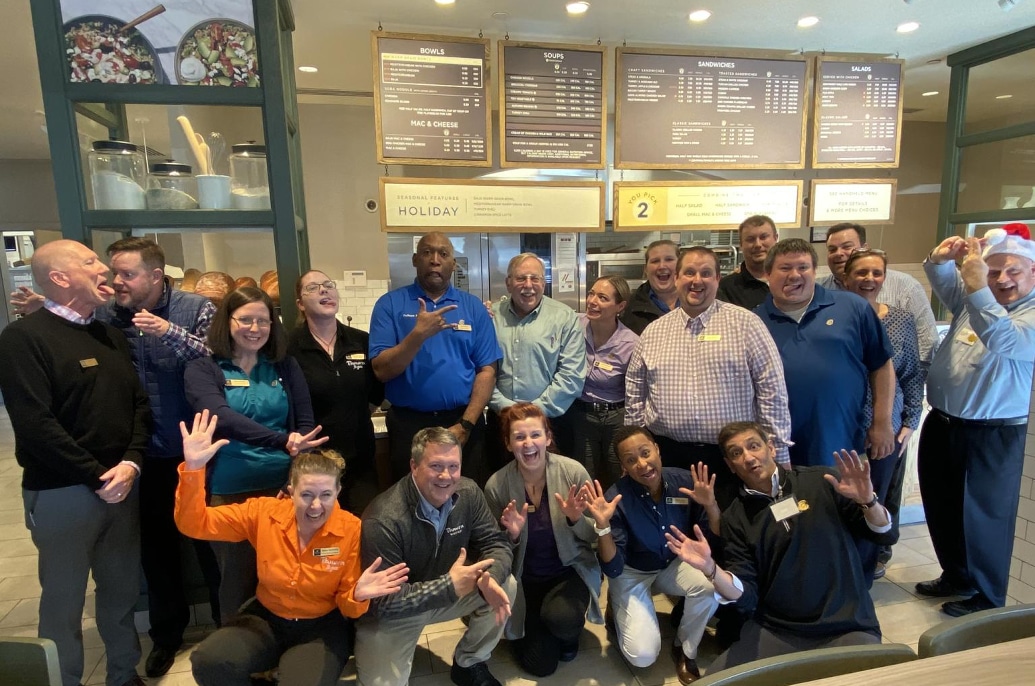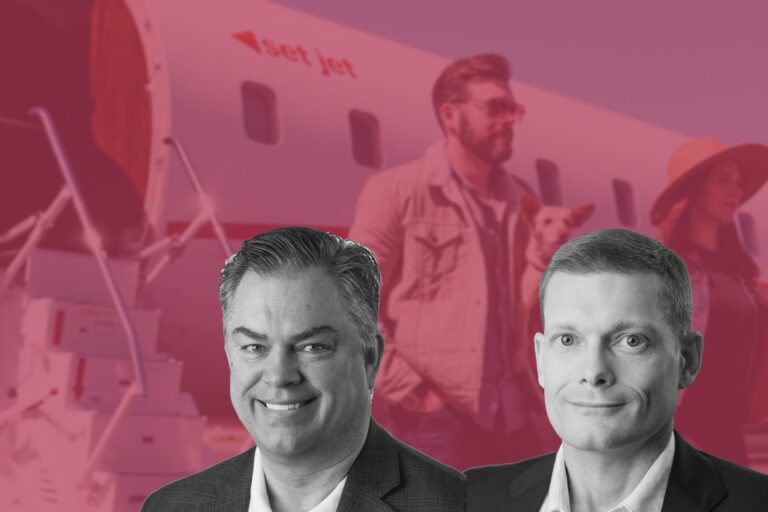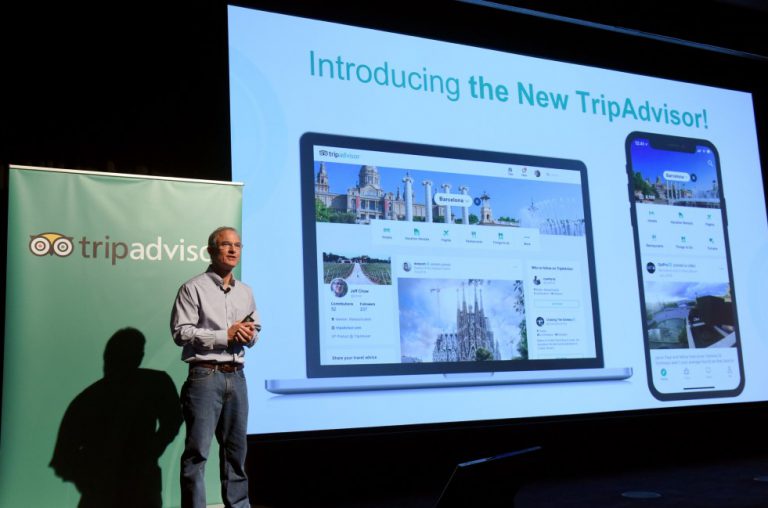Panera Bread: How Its Pioneering Spirit Lives on Despite Peaks & Valleys
With more than 2,000 restaurants across the US and Canada, Panera Bread is another food chain that imprints in people’s minds for their fast-casual dining like Starbucks or Chipotle. Unlike many fast-food titans that celebrate greasy and sugary dishes, this St. Louis-based company is health-conscious and environmental-catering that constantly pioneers in transformative eating experiences.
Panera started as a 400-square foot cookie store and developed into the best-performing restaurant stock of the past 20 years since 1997. The company has been through a lot of ups and downs since its inception, yet it always managed to pivot with even greater success. Its dominant position and resilience in the market are largely attributed to its rich culture and innovations which result from the company’s great leadership and management. Let’s read on to find out how Panera Bread navigate through the crisis time and what its leaders have done to keep its triumph.
Panera Bread: A Pioneering Spirit
Originated from a single cookie shop in Boston in 1981, Panera Bread was a transformative effort of Ron Shaich, the company’s founder and former CEO, that was long ahead of trend. Shaich predicted that a new wave of fast-casual dining was about to explode and positioned his company for success. His goal was to build a chain of restaurants that served healthy food in an engaging environment. “They wanted food that they felt good about, they wanted environments that engaged them, they wanted people that cared,” Shaich said. “Basically, they wanted to feel respected by their food. And what fast food had become was a commodity. It had become nutritional cocaine.”
His efforts paid off. With appealing sustainable offerings and evolving customer experiences, Panera was able to open a new bakery-café every few days and had more than a billion dollars in annual sales by 2010. It was Panera Bread’s “state-of-the-art” spirit that kept it forward and sustain for such a long time.
The company was at the forefront to develop an ethical supply chain while meeting the customers’ demands with health-conscious products such as their Chicken Bacon Dijon sandwich and Asian Sesame Chicken Salad. In 2004, Panera was the first company to offer antibiotic-free chickens which were more expensive at that time. It also took one step further to eliminate all artificial preservatives, sweeteners, flavors, and colors derived from artificial sources from its menu item.
A significant element of Panera’s growth strategy is the MyPanera loyalty program which enabled their customers with rewards and unique experiences. The program was a big hit that made Panera become one of the most successful restaurant chains in the United States by 2017, and its innovations were adopted by much of the industry.
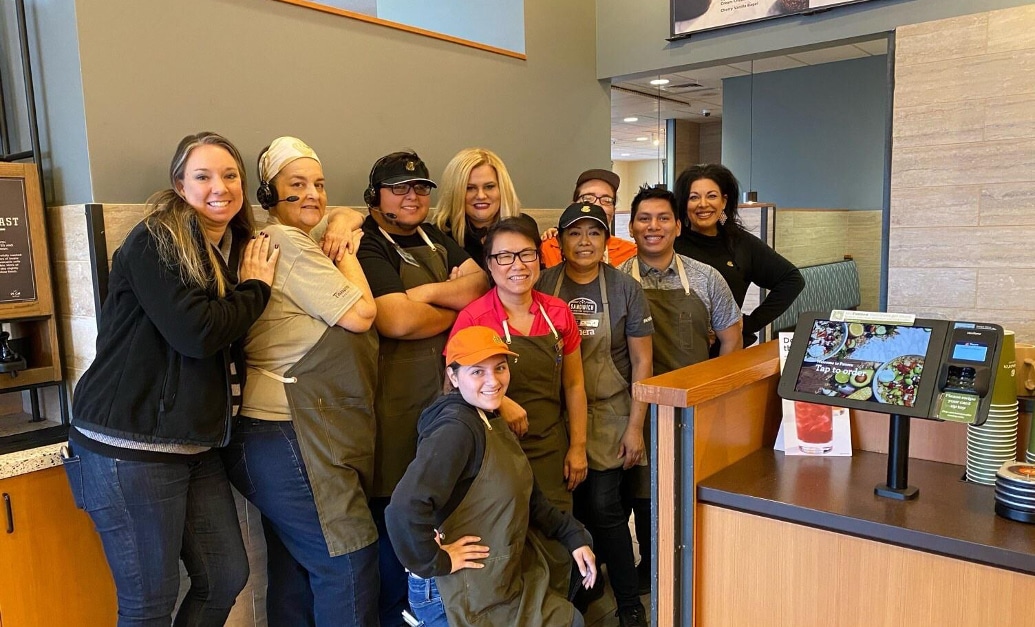
In 2010, Panera became the first company to voluntarily add calories to menu boards. This was an effort to increase transparency and gain customer trust. Four years later, Panera unveiled what the company referred to as “an investment in the customer enabled by technology and powered by operational excellence.”. Panera 2.0 aimed at elevating operational efficiency such as reducing wait times, improving order accuracy and minimize crowding by implementing a mobile device for dine-in, fast-lane kiosks for dine-in and to-go orders and customized ordering at in-store kiosks.
Stay Strong Amidst Challenges
Other than constant innovations to upgrade the products and customers’ experiences, Panera’s long-term values and business philosophy are the protectors of the company from external crisis.
As Covid-19 has devastated the restaurant industry, Panera has established itself as one of the fast-food industry’s biggest pandemic pivots. Instead of a patchwork response targeted solely on revenue decline, Panera management took a step back, identifying broader goals to guide its actions in order to survive the outbreak and thrive afterwards.
“Within a week, we saw a huge drop in our sales – and in that very first week we realized that this is big. So early in as a team we stepped back pretty quickly and said, “What’s truly important?” – Niren Chaudhary, current CEO of Panera Bread shared.
There were two things that the company prioritized to keep up its values. The first one is to ensure the safety of associates and customers. The other one is to protect Panera’s brand and business. “We had to do both. And we knew as we do both, we’ll have to make some very tough decisions and we will have to have one, the courage to do that quickly” – Chaudhary said. “Whatever we do, we must do through the filter of our values. And our values are around treating people fairly with respect, with compassion, with care, with the utmost amount of transparency and candor”
Panera was quick to turn most of its 2,000 locations to grocery stores that provided customers with access to scarce everyday items. The so-called Panera Grocery program promises delivery within 40 minutes and is available through Panera’s delivery network of 10,000 drivers, contactless, as well as at drive-through, locations with pick-up, and on Grubhub. The company also launched 1,000 curbside-pickup drive-ups in seven days flat in all the cafes in which we don’t have a drive-through; “we set up a new line of business in just two weeks” – Niren said.

On the human resources, Chaudhary reached out to Walmart and CVS, companies that needed workers to find jobs for almost 35,000 associates furloughed by Panera. Once the business recovered, Panera has managed to rehire all furloughed employees.
As Panera faced an unprecedented challenge in the pandemic, this was not the first time it encountered a crisis and pulled through smoothly. During the recession in 2009, the company was one of the few restaurants that stayed strong by doing nothing.
While many restaurants were in fierce price competition by offering deals to retain customers, Panera didn’t fall victim to discounting. Ron Shaich believed in a simple recession-fighting strategy of catering to the employed population that was still willing to eat out. “We understood that the fundamentals of the marketplace really haven’t changed,” said Shaich. “Unemployment went from 5% to 10%. There’s 90% of society that is still employed. I couldn’t capture all those people that are unemployed. They weren’t eating out at all. All I could do was stay focused on who my target customer was, and not be reactive.”
Panera didn’t sit still completely, after all. Whilst the restaurant industry witnessed its workers laid off and stores shuttered, Panera continued to invest. In 2008, the company opened over 100 new stores and continued its year over year growth story. “We’ve been basically opening up a new store every five days,” said Shaich. “This is the time to grow. Real estate costs are down, development costs are down, volumes are up — these are the highest-return investment stores we’ll ever generate.” Panera has hired 20,000 new workers, rolled out new menu items, and improved the lettuce quality in its salads. Salad sales are up 30%.
Such strong resilience, flexibility and innovation are what cultivate a great culture and values that maintain Panera over the past decades. However, its supreme position couldn’t be withheld without the contribution of its leaders, over three generations of the company’s leadership. Let’s read on to uncover how each CEO leads Panera to its success.
Ron Shaich: Build a Company with “Competitive Advantages”
In the early 80’s, Harvard-graduate Ron Shaich quitted his job for a large corporation and opened a cookie shop in Boston. He soon realized that nobody bought cookies before lunch so he served baguettes and croissants in the morning purchased from a failing French bakery called Au Bon Pain. Shaich then merged the cookie shop with Au Bon Pain and started selling homemade soups and sandwiches made with freshly baked baguettes. With over 250 shops, Au Bon Pain evolved into a modest national power, primarily catering to white-collar city employees on lunch breaks, yet it eventually began to stagnate. Ron decided to break the grounds by purchasing St. Louis Bread Company, a small Midwest sandwich/bakery chain and later renamed it Panera, established it as one of the four divisions of Au Bon Pain.
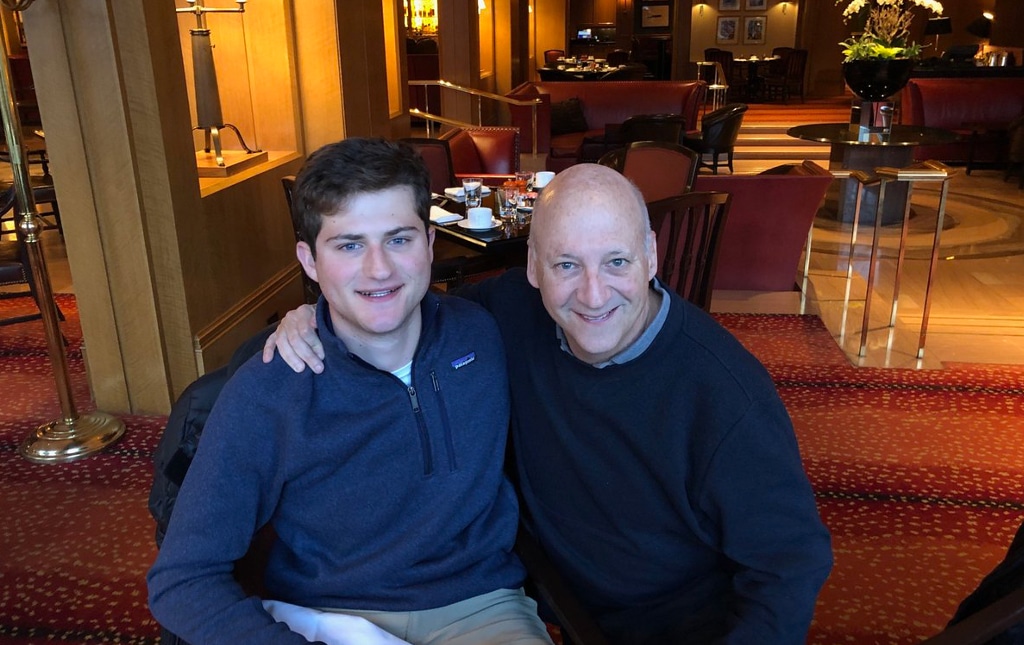
Ron’s business acumen was well reflected through his timely adaptation and transformation of the company that pulling off well. However, his pioneering vision and courage when selling off Au Bon Pain to focus on Panera were the driver behind the omnipresence of this bakery-café chain.
By 1998, when there were just about 200 restaurants, Panera was emerging as a nationally dominant company. However, its potential was buried under its mother name – Au Bon Pain with three larger divisions, and Ron was struggling to make his way. He was having a board disagreeing and calling him “crazy”, his team members blaming him for risking their jobs and to what Ron Shaich recalled, “there was blood on the floor in our corporate headquarters”.
Yet Ron had trust. He knew that if Panera owned Au Bon Pain and all the other lines instead of the other way around, he would sell everything, take all that capital, himself and all of his capital to make it a reality. And it did. After the transactions, the company’s stock was up a hundredfold at that time. Panera outdid Starbucks or Chipotle in stock performance and touched the lives of roughly 10 million American people per week. “The truth of the matter is nothing is proven until it’s done.” Shaich recalled. “But you need to have the fortitude to go through it. You need to have the strength to make those bold leadership decisions. You need to have the wisdom to be right about 80 percent of the time on those decisions.”
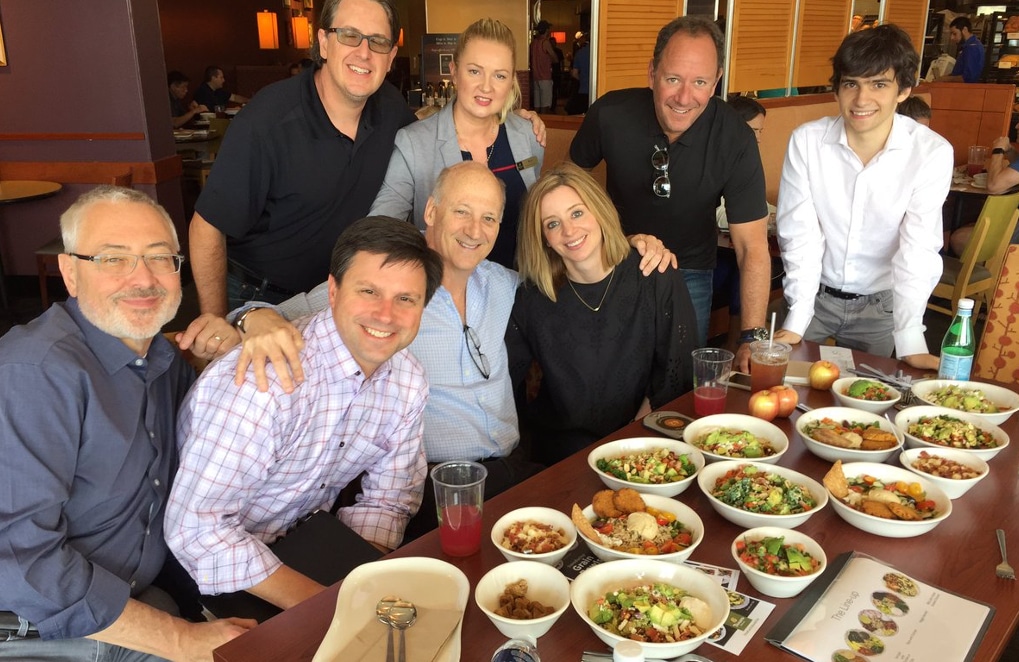
Ron Shaich also led Panera to its acquisition by JAB Holding company in 2017 for $7.5 billion which later repurchased the old Au Bon Pain. Reflecting on the strategy to build a billion-dollar brand, Ron answered simply in three words: Build competitive advantage.
A competitive advantage is what prompts customers to choose you over your competitors. Ron acknowledges that many restaurants lacked this trait and quickly fade away in the market. The reason, he believes, is because companies focus too heavily on delivering their successful business models that failed to serve the future demands. “Instead of innovating and doing the things that will help them discover the next growth opportunity, they devote an inordinate number of resources and focus to getting the work done, on time and on budget.” – he said. While the operations apparently matter to succeed, discovery is what makes a competitive advantage that sustains businesses in the long run. “So what I’ve learned is companies have to have both a discovery muscle and a delivery muscle. It’s not complicated, but it’s very hard to do”- Ron shared.
Blaine Hurst: Accelerate With Innovations
While Ron Shaich is the birth father that sets Panera’s successful visions and values, his successor Blaine Hurst – who took over the management in 2018, is the person that makes the company a leader in digital ordering and pickup that transformed the restaurant industry.
Hurst joined Panera in late 2010 to kick off the company’s “Panera 2.0” digital transformation initiative, which began in 2014 and aimed to improve the visitor experience. With more than $100 million invested in technology and operations, Hurst helped revamped how cafes and kitchen’s function, creating the systems and technology infrastructure to enable numerous digital ordering channels such as web, catering, delivery, smartphone apps, and in-store kiosks. Panera now handles more than 30% of its orders digitally, with digital sales exceeding $2 billion by the end of 2018.
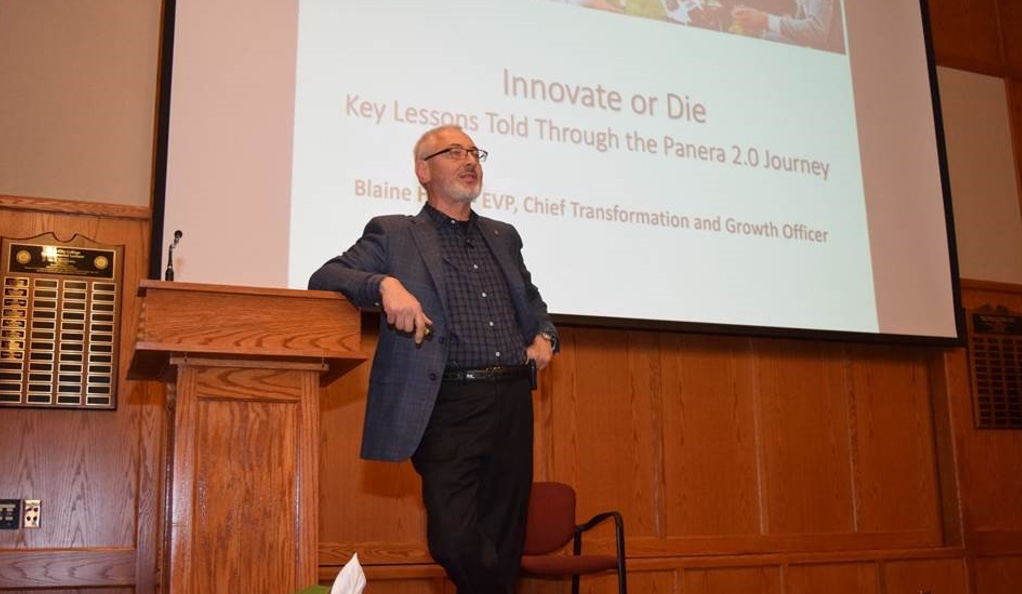
Since Hurst joined Panera, he has led a food-tech transformation that fully rolled out Panera 2.0; launched nationwide delivery and hired more than 10,000 associates to support this program. However, this is just the final result.
Initially, Hurst’s idea of bringing technology to Panera’s customers was met with severe disapproval from the board. He almost got fired during the process but kept pushing forward. “If you’re not willing to get fired for what you believe in, then maybe you’re not the right person to drive transformational change.” – he said. Hurst believes that no one likes changes, whether customers, associates, leaders or investors. As a result, entrepreneurs who work on transforming the status quo need to “expect the unbelievers” as your visions might get disagreed upon by the crowd.
Even if people believe, they won’t for long. That’s what happened with Panera board when they started out enthusiastically with Panera 2.0 but lost faith along the way. “All of a sudden they go ‘how much does this cost?’, ‘will this gonna pay off’, then to the stage of ‘Is this ever going to work?’” – Hurst recalled. The challenge for a transformational leader, he points out, is to allow those unbelievers the time to “check out” or the space to say, “I don’t believe”. “Even the most positive things have doubts” – said Blaine Hurst.
Niren Chaudhary: Sustain through Crisis with Compassion and Care
With Blaine Hurst taking the lead for almost two years, the former Krispy Kreme president Niren Chaudhary joined Panera as the new CEO in late April 2019. His long-term experiences in the restaurant industry were expected to complement and enhance rich values and innovations built by Ron and Blaine.
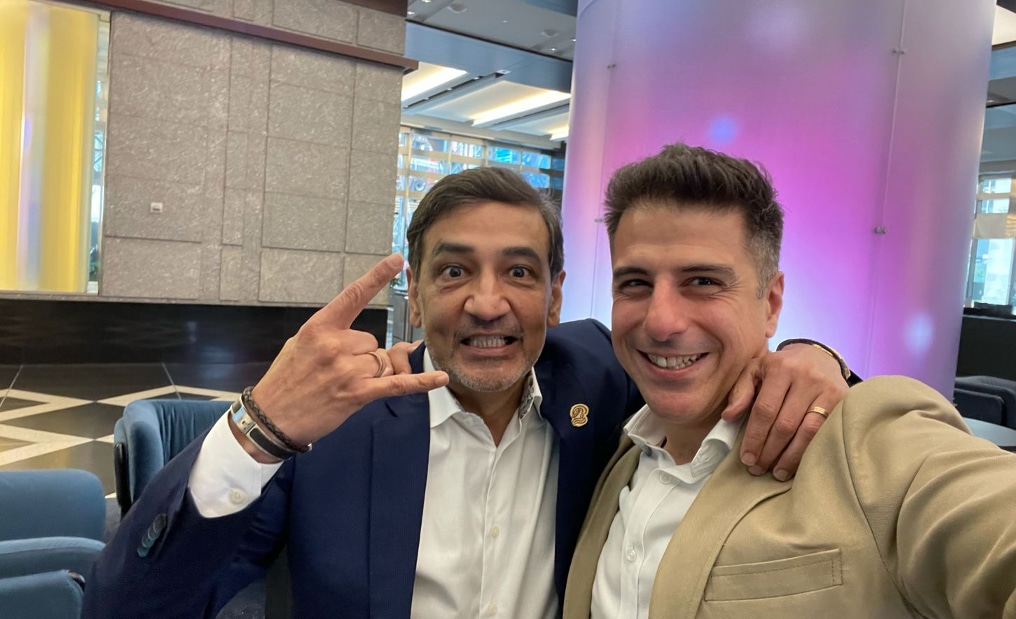
This Indian-born CEO took the Panera helm just one year before the pandemic hit yet his responses were well-reflected of Panera’s tradition and vividly showed Niren’s leadership style. By catering to multiple constituents of the chain, from customers, employees to investors, he has capitalized on the potential resources and drove through the storm. His mindset when facing any challenges was always “Never let a good crisis go to waste.”
When dealing with a crisis, Chaudhary always has compassion in mind. “I believe that life has to be a balance of ambition and compassion––doing big things but doing them with heart,” Mr. Chaudhary said. Panera’s quick responses were enabled because of its care towards its stakeholders.
“So associates, we talked about compassion and care. On customers, similarly, it is this mindset of, “How can I serve my customers at this moment? What is most important to them?” Safety and convenience” – Chaudhary explained. “So therefore, contactless delivery. Therefore, sealed packaging. Therefore, we launched 1,000 curbside pickup drive ups in seven days flat in all the cafes in which we don’t have a drive through.”
Niren also directed his care towards the bigger communities. Other than serving thousands of meals per week to doctors and nurses in New York, the company also launched #SeeAPlateFillAPlate challenge to inspire Americans to donate and fill in a plate for someone in need. The program is in support of Together Without Hunger, a campaign in partnership with Feeding America to help provide freshly prepared meals to children and families facing hunger during the COVID-19 pandemic.
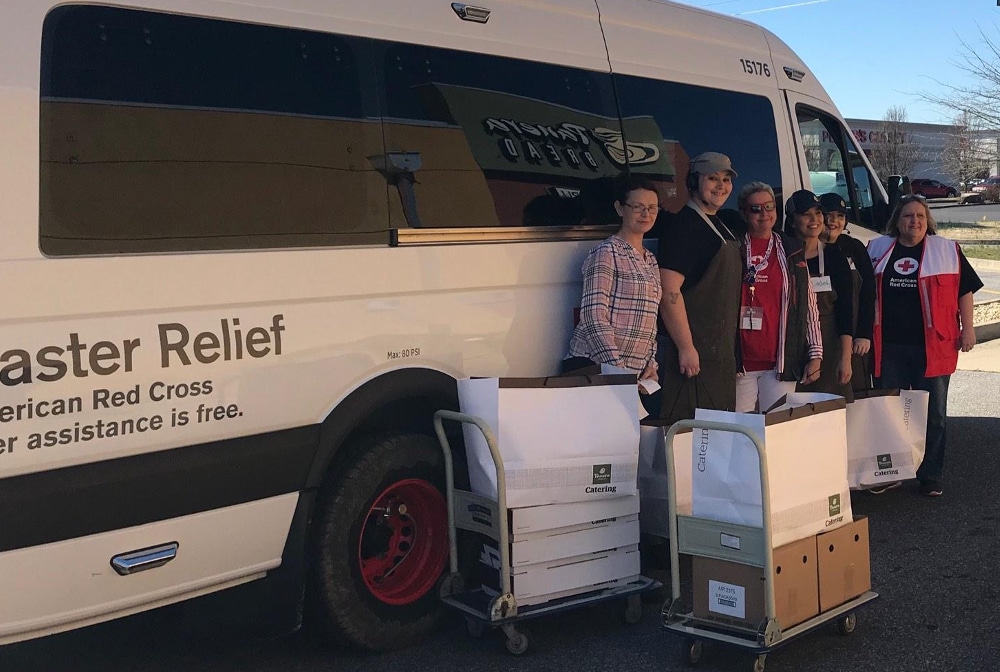
Having compassion has always been pivotal to Niren Chaudhary, shaped by the lifelong struggle of his children. “We are a product of our experience,” Niren said. “After having lost two of my daughters, life has taught me to be compassionate and grateful for what we have.” And it’s those experiences that are intertwined with my thoughts and behaviors. Having a sense of clarity always involves going back to who you are, and your values.”
The Bottom Line
For almost four decades of operating, each Panera’s leader has led the company through different challenges with his own leadership style. Ron Shaich founded Panera to be the nationwide health-conscious food chain with unique experiences and food options, Blaine Hurst led the company to outperform restaurant titans by its technology edge, Niren Chaudhary calms the tech-food giant during the coronavirus storm through his compassion and care. Through three generations of leadership, Panera has thrived and sustained its dominant position as one of the biggest restaurant chains in the country.

